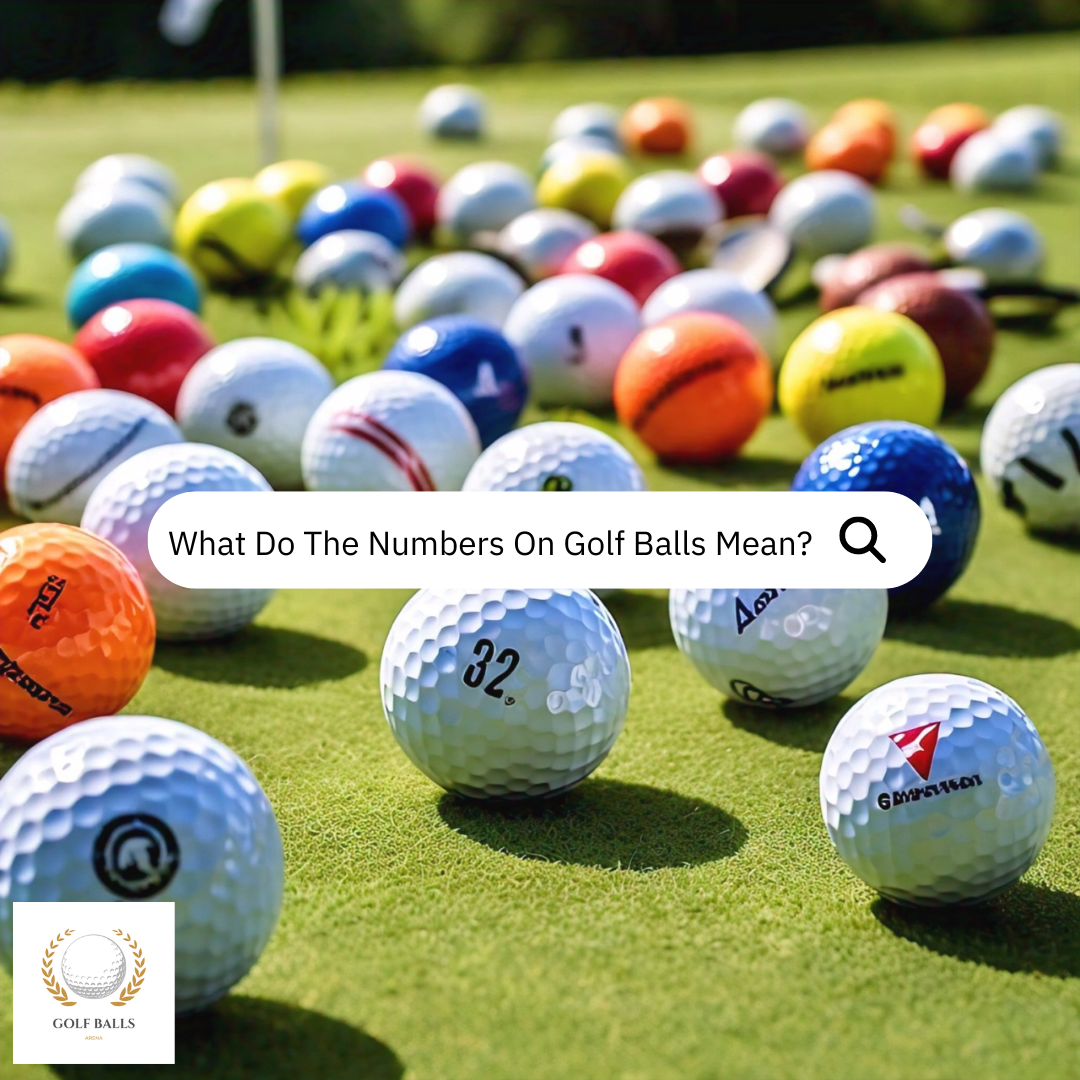What Do The Numbers On Golf Balls Mean?
Numbers on golf balls contain different types of information that depend on what numbers golf balls have. If you’ve looked closely at a golf ball, you may have noticed a number printed on it. But what exactly do these numbers mean?
Breaking Down the Numbers on Golf Balls
Modern golf balls typically have one-, two-, or three-digit numbers, each with a different serving. Let’s break down what each type of number means with examples.
Single-Digit Numbers: Ball Identification
Most common numbers on golf balls are single digits, usually 1 to 4, but some balls may feature numbers as high as 9. Brands like Titleist, Callaway, and TaylorMade often print single-digit numbers on their balls to help golfers differentiate their balls from others in competitive and casual play. For example, if more than one golfer plays with Titleist Prov1, the only way to determine their balls is through these numbers: Titleist Pro V1 ball with the number “1” printed on it used by player one. In contrast, other golfers used the ball with the number “3” or “4” printed on it.
Some manufacturers use color on a single-digit number to identify which golf ball model you will strike. Let’s say you are playing with Titleist Pro v1. The single-digit number must be black, while the red color is for Titleist Prov1x.
Golfers use a permanent marker to draw a symbol or dots on their balls for their identification because two players might be using the same Titleist 2 but wouldn’t have the same symbols, and it is legal by the golf regulations.
Two-Digit Numbers: Compression Rating
Some brands use two-digit numbers to allow golfers to customize the number on their ball for a personal touch. For instance, Titleist lets players choose between (1 – 99) for personalized golf balls.
You can also find two-digit numbers on old golf balls because, from the mid-20th century, manufacturers began to print two-digit numbers to represent the compression rating. Compression measures how much the ball compresses when struck by a club and how soft or firm the ball feels. It generally ranges from 70 to 110, with lower numbers indicating softer balls and higher numbers indicating firmer balls. For example, Titleist Tour Soft balls have a compression rating of around 75, making them an excellent choice for golfers who prioritize a soft feel and more distance on slower swings.
Low Compression (70-80): These balls are suitable for golfers with slower swing speeds. They compress more, which can help beginners generate distance who might not have the power of a professional golfer.
Mid Compression (90): Suitable for a broad range of golfers, balancing softness and distance.
High Compression (100-110): These balls are best for players with faster swing speeds who can compress the ball more easily. They offer more control and accuracy.
Three-Digit Numbers: Dimple Count
The third type of number on a golf ball is a three-digit number, which indicates the dimple count. Dimples are essential to a golf ball’s aerodynamics—they help reduce air resistance and improve lift, allowing the ball to fly farther. The number of dimples varies between models, typically ranging from 300 to 500 dimples. But in modern golf balls like today, you do not see three-digit numbers because most manufacturers do not include three-digit numbers on their balls.
Conclusion:
Understanding the numbers on a golf ball can give you valuable insights into how the ball will perform, whether it’s a single-digit number for identification, a two-digit number for compression rating, or a three-digit number for dimple count.
FAQS
Dimples affect the ball’s aerodynamics by reducing air resistance and improving lift, influencing the ball’s flight, spin, and trajectory. A higher dimple count can lead to a higher ball flight, while fewer dimples may offer a more penetrating trajectory.
Your swing speed is the key factor in selecting a golf ball with the correct compression rating. Players with slower swing speeds (under 85 mph) should opt for lower compression balls to maximize distance. Players with faster swings (85 mph and above) may benefit from mid to high-compression balls for better control and accuracy.
No, you don’t have to worry about numbers on golf balls; focus on your goal and find out which golf ball in the market is best for you, whether you want distance, control, or feel. These numbers are only for information so golfers understand.
Hi, I'm Austin Grey. I've been passionate about golf since 2005, and over the years, I've immersed myself in every aspect of the game. With nearly two decades of experience, I've developed a deep expertise in one particular area: golf balls. I created this blog to share everything I've learned about golf balls with fellow enthusiasts like you. Here, you'll find detailed reviews, insightful tips, and comprehensive guides to help you choose the perfect ball for your game. Whether you're just starting out or have been playing for years, I'm here to help you enhance your golf experience, one ball at a time.

